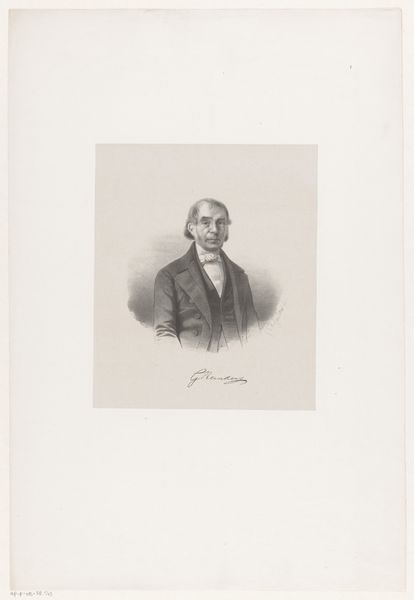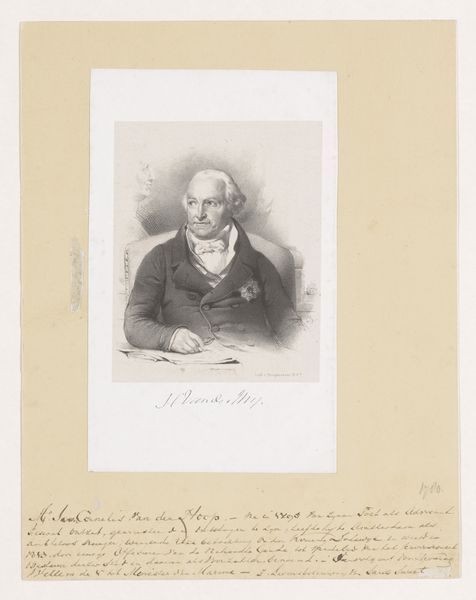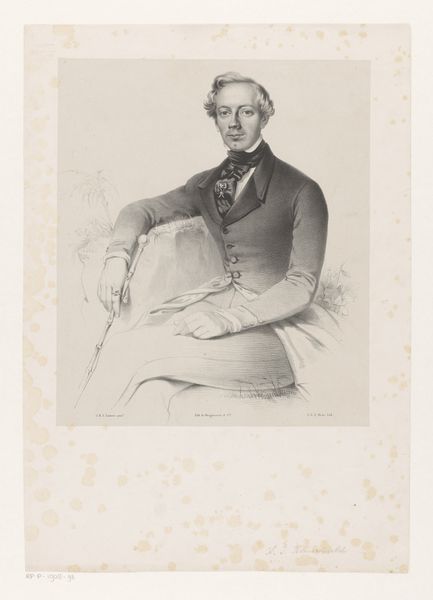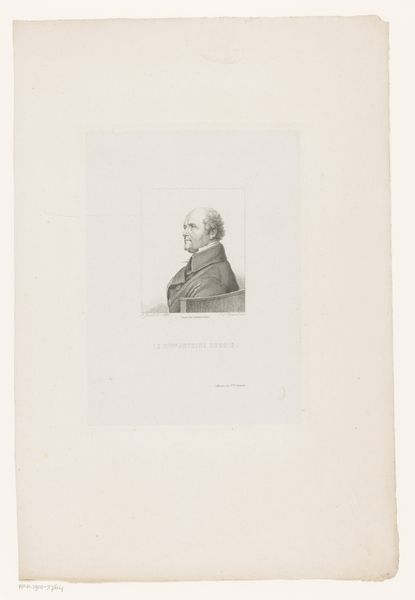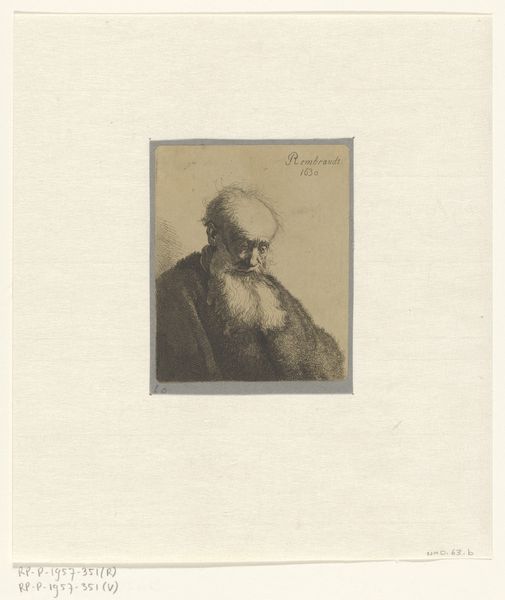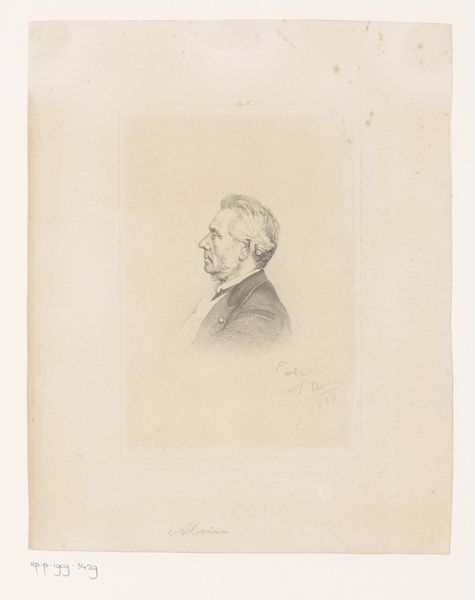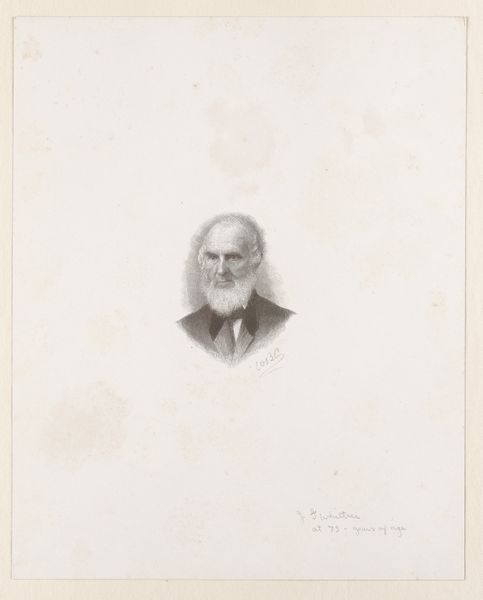
Dimensions: height 285 mm, width 230 mm, height 485 mm, width 350 mm
Copyright: Rijks Museum: Open Domain
Curator: Here we have a work titled "Portret van wiskundige J. van Cleeff", which translates to "Portrait of mathematician J. van Cleeff." The artist, König, rendered this portrait sometime between 1842 and 1862. Editor: It's striking how much detail they've managed to get using just pencil. I'm drawn to the texture of the paper, too; it looks almost like fine linen. Curator: It's a fabulous example of 19th-century portraiture and the rise of academic art, meant to convey status and intellect. Notice the detailed rendering of his clothing. This wasn’t just about likeness; it was about portraying van Cleeff in a certain light. Editor: And the pencil work itself is really considered. The hatching, the soft blending – all carefully constructed to elevate what could easily be a sketch into a finished piece of social propaganda, for lack of a better word. I wonder what pencils were available at the time, what the labour behind producing those would have been like? Curator: Absolutely. Think of the market for portraits like these! Van Cleeff likely commissioned this to solidify his position within academic circles. The portrait becomes a commodity, signifying prestige and intellectual prowess. It would circulate among his peers. Editor: It's also interesting how the material contributes to the impression of a man of intellect. A crisper medium might’ve lent too much drama. There is something almost approachable in the humble medium of pencil. It domesticates intellect to make it more palpable. Curator: I agree. Pencil creates a certain accessibility and reinforces this idea of rationalism. It implies he’s a man of ideas— sketched out in the world around us rather than divinely inspired. This helps us understand how social position and self-construction operated during this time. Editor: The materials definitely echo the message. Well, it’s nice to think about all the labour and intentionality folded into a seemingly straightforward portrait. Curator: Indeed, the artifice and social role here were intended to project the subject as thoughtful and significant.
Comments
No comments
Be the first to comment and join the conversation on the ultimate creative platform.
